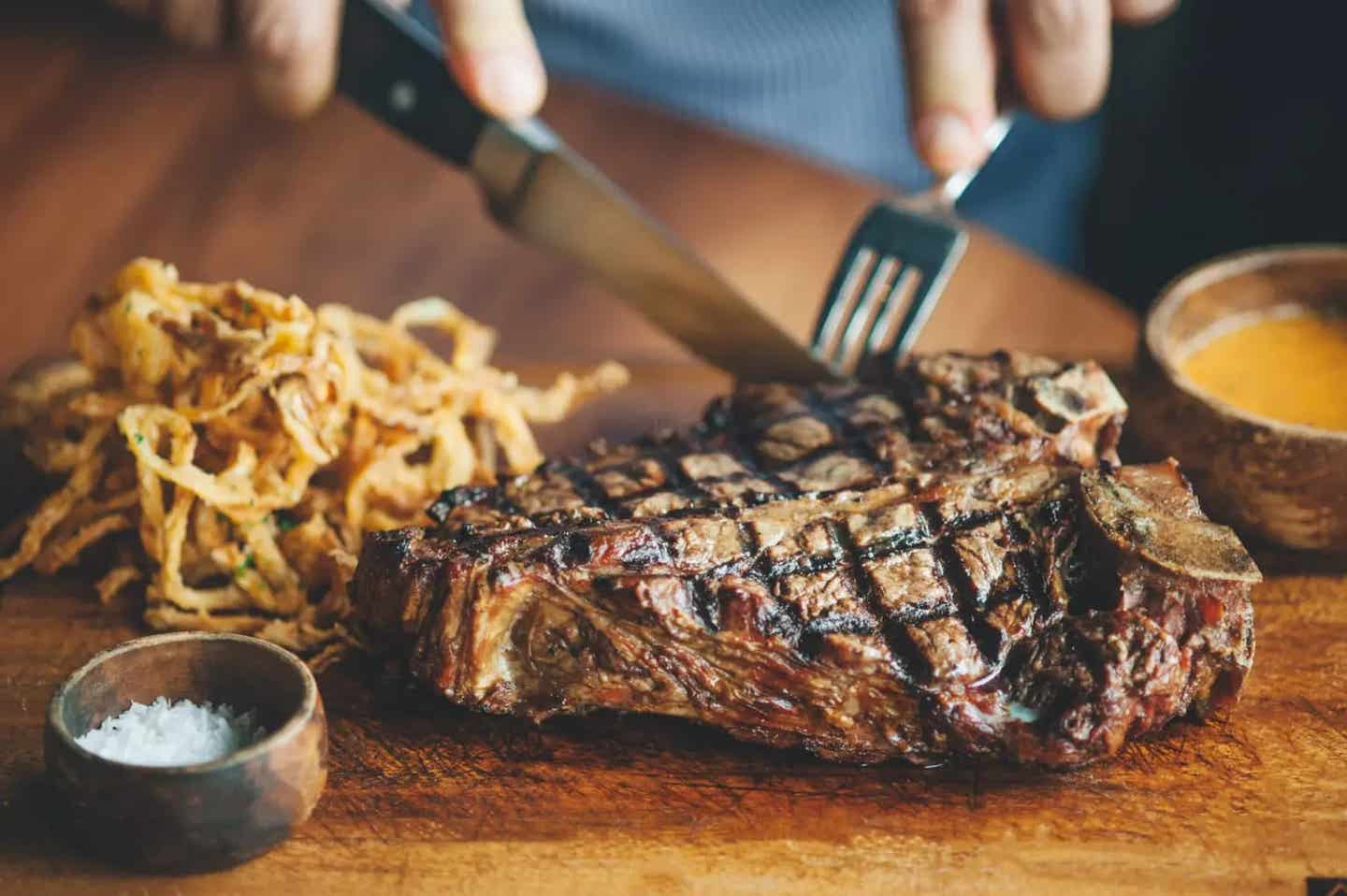This simple diet change can increase life expectancy by 33%
Scientists have found that limiting the consumption of the essential amino acid isoleucine can dramatically slow the aging process.

Researchers have found that limiting the consumption of the essential amino acid isoleucine can greatly slow down the aging process and increase lifespan. (CREDIT: CC BY-SA 4.0)
A study published in Cell Metabolism reveals that limiting the intake of the essential amino acid isoleucine can significantly slow aging and extend the lifespan of mice. This discovery has sparked interest among researchers, raising the question of whether similar dietary strategies could improve human longevity and overall health.
Isoleucine is one of the three branched-chain amino acids essential for building proteins in the body. While crucial for survival, it must be obtained through dietary sources such as eggs, dairy products, soy protein, and meats, as the body cannot synthesize it. However, the study suggests that moderation in isoleucine consumption might be key to promoting healthier aging.
Prior research had already hinted at a connection between isoleucine intake and metabolic health. Data from a 2016–2017 survey of Wisconsin residents showed that individuals with higher body mass indexes (BMIs) tended to consume more isoleucine. These findings laid the groundwork for the recent investigation into its impact on aging.
Dudley Lamming, a metabolism researcher at the University of Wisconsin and a contributor to both studies, notes, “Different components of your diet have value and impact beyond their function as a calorie, and we've been digging in on one component that many people may be eating too much of.”
The study highlights a promising avenue: reducing isoleucine intake could improve both lifespan and "healthspan," even when dietary changes are made later in life. This opens up possibilities for interventions aimed at enhancing the quality of life in older populations.
The research involved a genetically diverse group of mice divided into three dietary groups. One group served as the control, consuming a diet with the standard 20 common amino acids. Researchers observed that mice with restricted isoleucine intake showed notable improvements in aging markers and longevity.
This discovery underscores the potential of dietary interventions to influence health and longevity, paving the way for future studies exploring how these findings might translate to humans.
The second group had all amino acids reduced by approximately two-thirds, while the third group had only isoleucine reduced by the same proportion. The mice, equivalent in age to a 30-year-old human, were free to eat as much as they desired, but only from the specific type of food provided to their respective groups.
Related Stories
Remarkably, restricting dietary isoleucine led to a host of positive effects on the mice's health and longevity. It increased their lifespan, improved their overall healthspan, reduced frailty, and promoted leanness and glycemic control.
Male mice experienced a remarkable 33 percent increase in lifespan compared to their counterparts whose isoleucine intake was not restricted, while female mice enjoyed a 7 percent increase.
These mice exhibited significant improvements across 26 health measures, including enhanced muscle strength, endurance, better blood sugar control, improved tail function, and reduced hair loss. Notably, male mice in the low isoleucine group demonstrated less age-related prostate enlargement and a reduced likelihood of developing cancerous tumors—a common occurrence in diverse mouse strains.
An unexpected twist in the study was that the mice with restricted isoleucine consumption actually consumed more calories than their counterparts. Despite the increased caloric intake, they managed to burn more energy and maintain leaner body weights, even though their physical activity levels remained unchanged.
The implications of this research extend beyond the world of mice, raising the tantalizing prospect of similar anti-aging effects in humans. However, as with all studies involving mice, there are significant challenges to overcome before translating these findings into practical human applications.
Diet is a complex chemical reaction within the body, and it is likely that other dietary components play crucial roles in achieving the observed results.
General protein restriction, for instance, has been shown to have detrimental effects on both mice and humans. Therefore, applying these findings to the real world is more intricate than merely reducing the consumption of high-protein foods, despite its simplicity in limiting isoleucine intake.
The researchers highlight that the amino acid restriction level remained constant in all experiments. They acknowledge that further fine-tuning may be necessary to optimize the effects across different strains of mice and genders, emphasizing that when it comes to diet, one size does not fit all.
Dudley Lamming underscores the complexity of the issue, stating, "We can't just switch everyone to a low-isoleucine diet." However, he remains hopeful, suggesting that isolating the benefits to a single amino acid brings us one step closer to understanding the underlying biological processes and the potential development of interventions for humans, such as isoleucine-blocking drugs.
10 common foods that contain significant amounts of isoleucine:
Chicken: Chicken is a rich source of isoleucine, with one cooked chicken breast containing about 2.7 grams of isoleucine.
Beef: Beef is another good source of isoleucine, with one cooked beef steak containing about 2.4 grams of isoleucine.
Pork: Pork is also a good source of isoleucine, with one cooked pork chop containing about 2.2 grams of isoleucine.
Fish: Fish such as salmon, tuna, and cod are good sources of isoleucine. One cooked salmon fillet contains about 2.3 grams of isoleucine, one cooked tuna steak contains about 2.1 grams of isoleucine, and one cooked cod fillet contains about 1.8 grams of isoleucine.
Eggs: Eggs are a good source of isoleucine, with one large egg containing about 1.4 grams of isoleucine.
Dairy: Dairy products such as milk, cheese, and yogurt are good sources of isoleucine. One cup of milk contains about 1.2 grams of isoleucine, one ounce of cheese contains about 1.0 gram of isoleucine, and one cup of yogurt contains about 0.8 grams of isoleucine.
Legumes: Legumes such as beans, lentils, and peas are good sources of isoleucine. One cup of cooked beans contains about 1.5 grams of isoleucine, one cup of cooked lentils contains about 1.3 grams of isoleucine, and one cup of cooked peas contains about 1.1 grams of isoleucine.
Nuts and seeds: Nuts and seeds are good sources of isoleucine. One ounce of almonds contains about 1.4 grams of isoleucine, one ounce of sunflower seeds contains about 1.2 grams of isoleucine, and one ounce of peanuts contains about 0.9 grams of isoleucine.
Whole grains: Whole grains are good sources of isoleucine. One slice of whole-wheat bread contains about 0.5 grams of isoleucine, one cup of cooked oats contains about 0.4 grams of isoleucine, and one cup of cooked brown rice contains about 0.3 grams of isoleucine.
Avocados: Avocados are a good source of isoleucine, with one avocado containing about 0.6 grams of isoleucine.
The groundbreaking findings have opened up new avenues for research into aging and longevity. While the road to applying these discoveries to humans may be challenging and uncertain, the prospect of enhancing healthspan and extending lifespan through dietary interventions has never seemed closer to realization.
As scientists continue to unravel the mysteries of aging, the promise of a longer, healthier life remains a tantalizing possibility on the horizon.
Note: Materials provided above by The Brighter Side of News. Content may be edited for style and length.
Like these kind of feel good stories? Get The Brighter Side of News' newsletter.
Joseph Shavit
Head Science News Writer | Communicating Innovation & Discovery
Based in Los Angeles, Joseph Shavit is an accomplished science journalist, head science news writer and co-founder at The Brighter Side of News, where he translates cutting-edge discoveries into compelling stories for a broad audience. With a strong background spanning science, business, product management, media leadership, and entrepreneurship, Joseph brings a unique perspective to science communication. His expertise allows him to uncover the intersection of technological advancements and market potential, shedding light on how groundbreaking research evolves into transformative products and industries.



